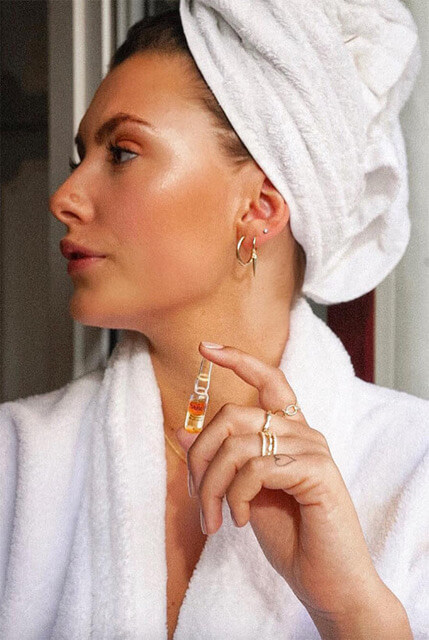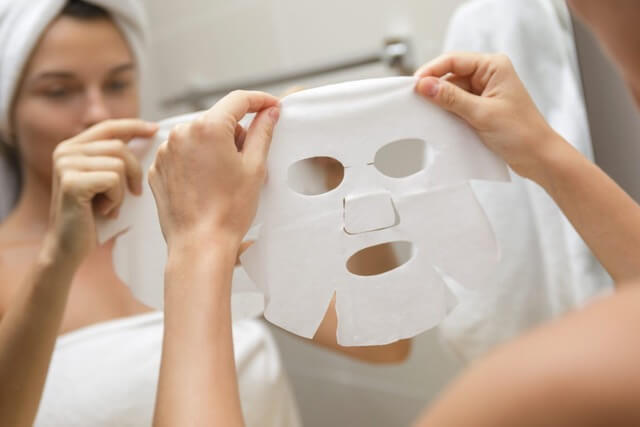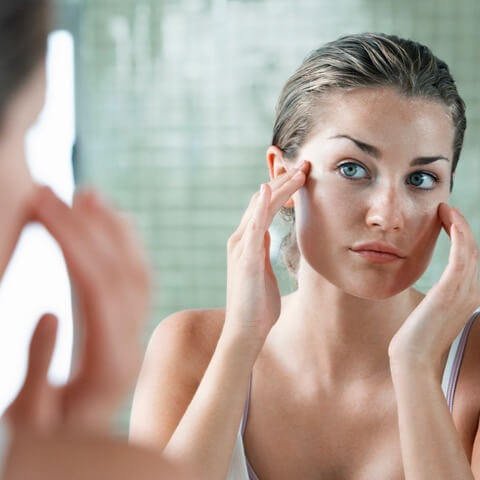Don’t be scared of the idea of a skin peel – it doesn’t mean skin shedding like a snake, well for home skin peels anyway. As physical scrubs exfoliate the skin mechanically, removing superficial dead skin cells, skin peels exfoliate the skin chemically, loosening the tight bonds between skin cells, encouraging slightly deeper exfoliation, encouraging new cell formation and reducing excess oil in the pores and skin.
Skin peels help to reduce inflammation, acne, pigmentation, fine lines/wrinkles and boost your skin’s natural glow. It gives your daily skin routine a boost and helps maintain or enhance results in between professional treatments. They are not made equally so in this blog, I wanted to share with you some tips on carrying out an effective at-home skin peel i.e. good results while preventing problems.
KNOW YOUR ACIDS
Alpha-hydroxy acids (AHA’s)
Benefits:-
• exfoliation
• promote collagen and blood flow
• correct discoloration from scars and age spots
• improve appearance of surface lines and wrinkles
• prevent acne breakouts
• brighten your complexion
• increase product absorption
Types of alpha-hydroxy acids:-
• Citric acid / Citrate – from citrus fruits. Great for instant skin glow.
• Glycolic Acid – from sugar cane. Smallest molecule so can be irritating.
• Mandelic Acid – from bitter almonds. Gentler and better for acne breakouts. Less irritation.
• Malic/ Maleic Acid – from apples. It also helps ceramics stimulation.
• Lactic acid – from fermented milk. Great for hydrating and brightening the skin.
Beta-Hydroxy Acid (BHA)
Benefits
• Oil loving so it can penetrate deeper to unclog pores
• Helps to prevent acne
• Reduce redness and inflammation
• Reduce excess oil
• Reduce appearance of large pores
• Remove dead skin cells
Types of beta-hydroxy acids:-
• Salicylic acid – common ingredient in anti-acne products. However, BHAs have no humectant properties so it can drying for some skin types.
• Citric acid – although mainly classed as an AHA, some formulations are BHAs too primarily used to dry out excess sebum and clean out dead skin cells in the pores.

Other acids
• Polyhydroxy acids (PHA) are second generation AHA e.g. lactobiotic acids. They are meant to be as effective as AHA but less irritating due to their larger size. It’s great for sensitive skin that is prone to irritation and redness caused by using normal AHAs. These milder acids are also good for dryer skin conditions.
• Enzymes – Although not an acid per say, it is often an active ingredient in home skin peels.
Enzymes are chains of amino acids that are responsible for many different biological processes.Enzymes gently break down excess keratin on the surface of the skin, leaving it smoother and more healthy looking. Enzymes help protein digestion and dissolve impacted surface cells, speeding up the skin’s natural exfoliation process. It’s usually made of fruit enzymes (e.g. pumpkin, papaya or pineapple) so check the ingredients to ensure you’re not allergic to the fruit.
BEFORE YOUR SKIN PEEL
If you have never had a skin peel before or your skin is not used to the active ingredients in the skin peel, it’s best to use a product that has smaller concentrations of the active ingredient at least 2-3 weeks before to prep your skin to prevent any potential reaction e.g. burning or itching.
If your skin is sensitive, your skin barrier (epidermis) is most probably impaired so it’s important to speak to a skin specialist who can advice you on best products and practices to strengthen your skin barrier, increasing its resilience before it’s ready for a skin peel.
About 5-7 days before, you want to avoid these:-
• CACI or any electrical beauty treatments
• Microdermabrasion
• Facial electrolysis or Threading
• Facial laser treatments
• Active skin ingredients e.g. retinol, glycolic acid, lactic acid or salicylic acid (unless stated otherwise)
• Direct sunlight (long exposures without sunscreen), sun beds or tanning booths.
• Avoid extremes of temperatures including saunas and steam baths.
Although home skin-peels are meant to be superficial, if your epidermal barrier is impaired, this increases risk of reaction (burning and itching) and post inflammatory hyperpigmentation.
DURING YOUR AT-HOME SKIN PEEL TREATMENT
It goes without saying that it’s important to follow the instructions of the home skin peel VERY CAREFULLY especially the time it’s meant to stay on your skin (some say 10minutes, some say
overnight). You will also need to know before you start how to neutralise the acid (some are self- neutralising so you don’t need to wash it off).
You may experience some warmth and some tingling. Your skin may look a little flushed too. If your skin is itching or burning (which means there is inflammation or the skin has been damaged),
wash off the peel solution IMMEDIATELY with luke warm water. Applying cold water straight onto the skin is usually not recommended as the sudden drop in temperature may cause your skin to
warm up further to counteract. Once you remove the peel solution from your face, you can then apply a cool compress to soothe the skin further.

After your skin peel treatment, I recommend applying a calming face mask followed by a soothing moisturiser (with hyaluronic acid, aloe vera or green tea) afterwards.
TAKING CARE OF YOUR SKIN POST-PEEL
Depending on the peel, it’s normal to have the after-glow effect. We all love the glow. The skin will feel softer and smoother and looks more even toned.
However, in the next few days, there may be temporary dryness or discoloration (in the form of a faint pink or brown tone) usually occurring following a AHA treatment. This is old skin cells lifting
from new skin cells forming underneath. There may be micro-flaking after 3-4 days, revealing further glowing, smooth and even tone skin.
During this recovery period, it’s important to protect your skin by avoiding direct sunlight and appliying sufficient UVA/UVB sunblock (minimum SPF 30) even on cloudy days. It’s important to
be gentle with your skin, using a mild or milky cleanser, keeping skin hydrated with hyaluronic acid serum, good quality moisturisers and nourishing facial oils if necessary.
Avoid using retinols or having facials too soon after, both of which can be too strong and can therefore irritate skin post-peel.

I hope you found this blog useful. If you’re unsure if your skin is suitable for a home skin peel or which home skin peel is best for your skin needs and goals, I would be happy to help. Book in a
virtual skin consultation with me via Get Harley and we can start/continue your journey to healthier, glowing skin.
To your best self,
Dr Terry

